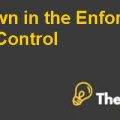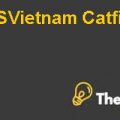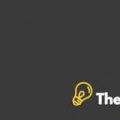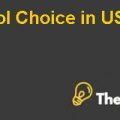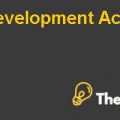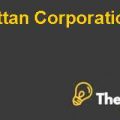Us-China Trade War Case Study Solution
Analysis of Apple Inc.
PESTLE Analysis (2018)
Political factors:
Tax cuts and job act was signed into law on 22nd December 2017 by Donald Trump. This reduced the corporate tax to 21% from the original 35% earlier, and also income tax reduction. Apple kept its earnings outside of USA in order to avoid the payment of 35% tax. For money offshore, Apple was liable to pay $78.6 billion tax. With the new reform, if the profits are repatriated, Apple could gain $47 billion (KESHIA HANNAM, 2017).
Additionally, Apple is also threatened by this trade war since China accounts for almost 25% of profits Apple generated. China was also predicted to become biggest market of Apple(Edward Jims, 2017). By any retaliatory move by Beijing, Apples revenues would be negatively impacted.iPhone imports will be heavily taxed raising the already exorbitant prices, affecting the consumer demand of china.
In retaliation to trumps $200 billion tariffs, China also imposed $60 billion tariffs. Although Apples core products like MAC, iPad, & iPhone were exempted in the US tariff, its audio accessories and wearables which had a sale of 3.5 million Apple watches were not. Condition could even worsen more if the core products are also taxed, since trump wants to impose taxes on all items.(Bradshaw Tim, 2018)
Economic Factors:
UK’s economy has held up well despite the uncertainty over Brexit. UK also recovered from its wage squeeze and inflation giving more money in hand to spend. The employment with unemployment rate is at its lowest since 1975(BBC, 2018). All these factors managed to keep Apple its biggest brand with 48% of market share which is way ahead of 35% share of Samsung (Statista, 2018).
Social Factors:
Due to the demand of large screen and full display smartphones, demand for phablets has increased. Some of Apples competitors have already manufactured smartphones with large screen to take advantage over the market share.These includes Huawei and Samsung. In response, Apple released a new iPhone XS Max with a screen of 6.5 inches large. This happens to be the largest screen phone iPhone has made till now (Apple.com, 2018).
Technical Factors:
Trend of artificial intelligence is revolutionizing the technology, since its easier to complete tasks using voice controls (Stacey, 2018). AI functions are therefore being incorporated by the smartphone companies by combining AI with voice control and getting a third party app to integrate the commands.Apple announced its new Siri powered, operating system iOS 12. It makes the operating system highly personalized and faster. Besides this, a new gadget home pad wireless is powered by Siri. It produces quality sound and has voice activation functionality.
Legal Factors:
European commission proposed temporary levy in March 2018 to tax world’s biggest tech firms for operating in the UK and claiming to pay little tax. 3% tax levy is proposed to Technology Companies with revenues exceeding 750 mn euros annually.Apple will have to yearly pay extra £4.4 billion for operating in Europe if the new legal requirement comes into effect(Wallace Tim, 2018).
Since the digital turnover law requires backing of European Union and 28 EU countries, it still hasn’t been signed into law. €14 billion were paid by Apple forcefully as a fine in May 2018, as Ireland citied it Violated EU law (Toplensky, 2018). This shows a tough stance by EU for digital giants paying low tax.
Environmental Factors:
Sustainability helps company in improving profit margins and waste management. Apple is completely running on renewable energy. Its offices, data centers, shops, throughout the country are on 100% green energy. Solar and wind projects have been constructed in China to limit carbon emissions (Andrew, 2018).
Porter’s 5 Points
Overview:
External forces can reduce or limit revenues, business development potential, profitability and market share. Apple has partly based its strategies to address these external forces. Apple should mainly focus on buyers bargaining power and competitive rivalry. Apple effectively address the external forces by rapid and continuous innovation. Its main strategy is to attract people to buying apple products and keeping an edge over its competitor.
- Competitive rivalry (Strong)
- Customers Bargaining power (Strong)
- Suppliers Bargaining power(Weak)
- Threat of substitution (Weak)
- Threat of new entry(Moderate)
Competition by others (Strong)
Apple is facing strong force of rivalry from other brands all over the world. The influence can be determined by following factors:
- Low switching cost (Strong)
- Low differentiation (Strong)
- High aggressiveness of firm (Strong)
Samsung and LG are competing with Apple since long. A strong force is imposed in the industry environment due rapid innovation, advertising, and imitation. Moreover, the products available in the market are quite similar. For instance, Majority of the apps are available for iOS and Android both. It is very easy for customers to switch between Apple other brands due to low stitching costs. When it comes to price, network externalities, function, accessibility and related concerns, Apple is not much different from other brands. Due to all these factors tough rivalry competition exists between Apple and other brands.
Buyers Bargaining Power: (Strong)
Apple is greatly affected by buyer’s preferences, perception and purchase decisions. The factors affecting Apple are:
- Switching cost is low (strong)
- Individual buyers size is small (weak)
- High buyer information (strong)
Since it is easy to switch between brands, buyers are compelling Apple to maintain a good quality and customer satisfaction. On the other hand, compared to the company’s total revenue purchase from a single customer is small; this makes the customer weaker at this level. However, the easy availability of information for comparative purposes of competing products empowers the buyer switch or shift in products. A strong force is exerted by this factor on Apple and other brands. These factors show that Apple has to incorporate buyers bargaining power to their strategic planning.
Suppliers bargaining power (Weak):
Apple is not much affected by suppliers bargaining power. This factor is about how successful are suppliers in imposing their demands to Apple and its competitors. The factors effecting Apple are:
- Large number of suppliers (weak)
- Overall supply is high (weak)
- Firm concentration to supplier concentration ratio is high (weak)
Apple has access to several suppliers in the world due to the global size of supply chain. Therefore,factor of high number of suppliers presents a weak force on Apple. Suppliers are also weak at imposing their demands since the firm has many options to purchase their inputs from. Moreover, small number of big firms like Samsung and Apple with many small to moderate suppliers further restricts the suppliers to make their demands. All these factors together make a weak impact on Apple. Supplier with bargaining power of respective category are mention in............
This is just a sample partical work. Please place the order on the website to get your own originally done case solution.

